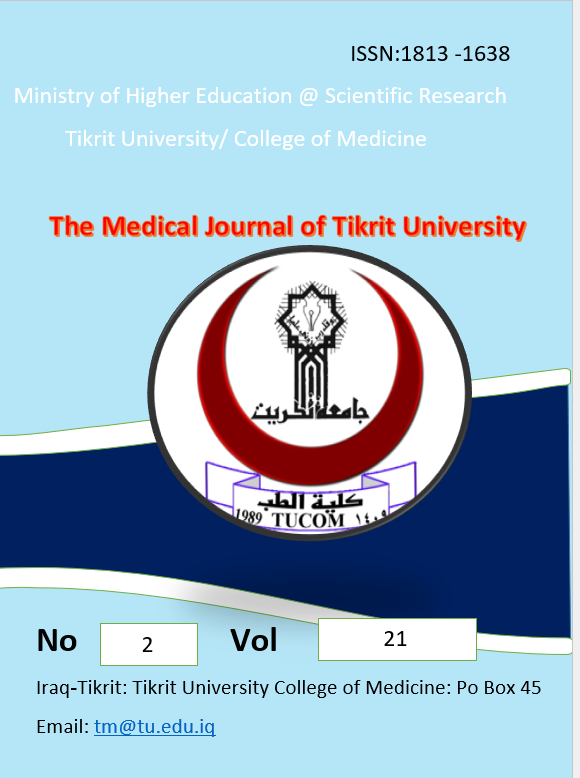Electrocardiographic changes in acute ischemic stroke In Kirkuk : Azadi teaching hospital
Keywords:
Electrocardiographic changes , ischemic strokeAbstract
Background:
Recent onset of cerebrovascular disease of ischemic nature have electrocardiographic changes, in those patients who had no primary heart disease. We estimate the prevalence of electrocardiographic changes for being of significant one.
Material and Methods:
Descriptive study of one year duration through which (72) patients were rouled in this study whom they were admitted to Azadi teaching hospital as acute ischemic stroke of new onset with no previous heart disease. The result was compared with match group of (72) patients whom were admitted to other unit of the same hospital with no stroke as control group.
Results:
Of (72) patients of the study sample about (59.7%) were males and (40.3%) were Females, their mean of age (62.5 years) with the range of (40-85) year. The control group of patients was consisting of (52.7%) males and (47.3%) females mean age was (61.5%) years with range of (45- 80) year.
Frequency of electrocardiographic changes of the study sample was (59.9%) while with the control group of the patient was (26.4%)
Conclusion:
Observation of this study , was suggested that the electrocardiographic abnormalities are common among new onset of acute ischemic stroke in spite of normal functioning heart, predominantly as T inversion followed by ST depression and these changes are of significant value for these patients.
Cardiac abnormality, including coronary flow disturbance may play a role in causation of acute ischemic stroke and it is important as prognostic measures.





